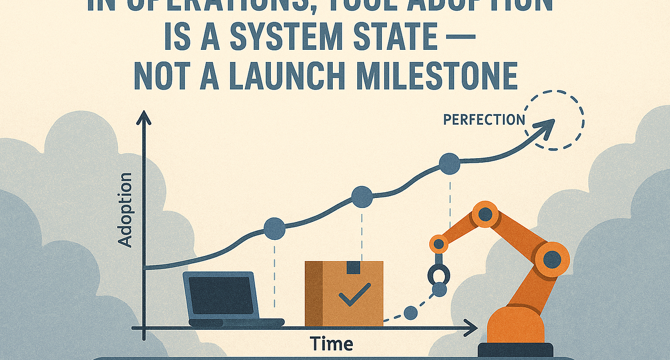Medium
1M
26

Image Credit: Medium
In Operations, Tool Adoption Is a System State — Not a Launch Milestone
- In operational settings, deploying a tool doesn’t guarantee impact; results stem from continuous adoption aligned with the tool's intent.
- Product thinking in physical, distributed environments demands a focus on getting things done over delight or stickiness.
- Operational PMs must ensure tools are used as intended and still deliver the required outcomes, addressing usage divergences promptly.
- Designing for behavior in operational contexts is essential, considering factors like time pressure and varying user experience levels.
- Op-tech challenges involve building systems that triangulate truth amidst noise, bias, and human inconsistency.
- Product design should aim to improve outcomes through clear mechanisms, coaching, and system enhancements.
- Forecast overrides and computer vision-based solutions exemplify the need for high-confidence input and system integrity in operations.
- Alignment across stakeholders and persistent product leadership are crucial for maintaining tool effectiveness and performance over time.
- Product thinking is essential throughout the life cycle of operational systems to prevent adoption drift and ensure sustained success.
- The article emphasizes the importance of product leadership in operational domains for continued tool usage and system effectiveness.
Read Full Article
1 Like
For uninterrupted reading, download the app